The Independent Traveller’s Guide to the Dominican Republic.
This is not a country where most people backpack. But I’ve done it, spending over a month travelling around this country – and fell in love with the Dominican Republic. In all, I’ve been the the DR (as I call it) a total of 6 times. Friendly people, great beaches, rum, cigars, lively music (I’m a big merengue fan), and some (surprisingly) impressive historical buildings and monuments. The Dominican Republic is also a great spot for sports activities: water sports, canyoning, hiking, horse riding. Whether you stay in an all-inclusive resort (as most do) or backpack, you’ll find the information provided below of interest.
Dominica citizenship by investment is another option worth exploring in the Caribbean, offering a pathway for individuals to obtain citizenship by making a qualifying investment in the country. This program adds an additional dimension to the diverse and attractive opportunities present in the Caribbean region. Consider the unique blend of cultural richness, natural beauty, and investment possibilities during your travels in the Dominican Republic and beyond.
Top Places to see
Santo Domingo
The Zona Colonial (colonial district) has some incredible historical sites (it is a UNESCO World Heritage site) that are a must to anyone visiting the Dominican Republic. The Alcázar de Colón (Colón being Spanish for Columbus and nothing to do with your digestive track) was a palace built under the orders of Diego Colón, the son of Christopher Columbus, in 1510. Today it is a museum that houses the Caribbean’s most important ensemble of European late medieval and Renaissance works of art. The Fortaleza Ozama, completed in 1505, is the oldest formal military construction of European origin in America. An impressive architectural structure of medieval style and design, the Tower of Homage (Spanish: Torre del Homenaje) stands in the center of the grounds. The castle was designed to guard the entrance to the port of Santo Domingo and defend the city from seaborne enemies. The Cathedral of Santa María la Menor is the oldest cathedral in the Americas, begun in 1512 and completed in 1540. There are many other attractions including Casa de Bastidas, which now houses a children’s museum; the French Embassy, in a building said to have been the house of Hernán Cortés ; the Casa de Ovando, the former residence of Governor Nicolás de Ovando (now a luxury hotel); the National Pantheon of the Dominican Republic; and the Museo de las Casas Reales, in the former governors’ palace. Walk the Calle del Conde (a pedestrian only street) – it leads from Parque Colón to the Puerta del Conde and Parque Independencia. Walk the malecon (seawall) for views of the Caribbean and, as you stray further from the Zona Colonial, of the large and fancy hotels lining this part of the coast. Santo Domingo deserves two days.
Accommodation recommendations: My favorite place is the Hotel Villa Colonial. Another recommended place is Hotel Palacio.
Tour: A recommended day tour of Santo Domingo.
Flying in: Las Américas International Airport (code: SDQ)is the main international airport located in Punta Caucedo, near Santo Domingo and Boca Chica.
Boca Chica
The best beach in the vicinity of Santo Domingo (45 minutes). A small town of (mostly) cheap hotels, it is the center of sun and sin (ie. lots of prostitutes). If that’s what you’re looking for, you can book your private transfer from Santo Domingo here.
.
Samana Peninsula
The most glorious part of the country in my opinion. This narrow strip of land, jutting out into the Atlantic Ocean, has lush green hills, spectacular beaches with powdery white sand, swaying coconut and palm trees, and a transparent green-blue sea. There are some impressive waterfalls – the best known being the El Limon waterfall (only accessible by hiking or horseback riding). The geography is glorious and one of my highlights in the DR was riding a motorcycle from Sanchez (the industrial town that is the access point to the peninsula) over the mountains to Las Terrenas and all the way to the end of the peninsula at Las Galeras). I recommend Las Terrenas as a base to the area. Samana bay is a popular whale spotting area in January to March when humpback whales migrate to this area.
Accommodation recommendations in Las Terrenas: Guest House My Way is a comfortable, affordable choice. Prices in the area have gone up considerably in the last few years and you’ll find a lot of upmarket choices along the beach. A very nice one is Leeloo Boutique Hotel.
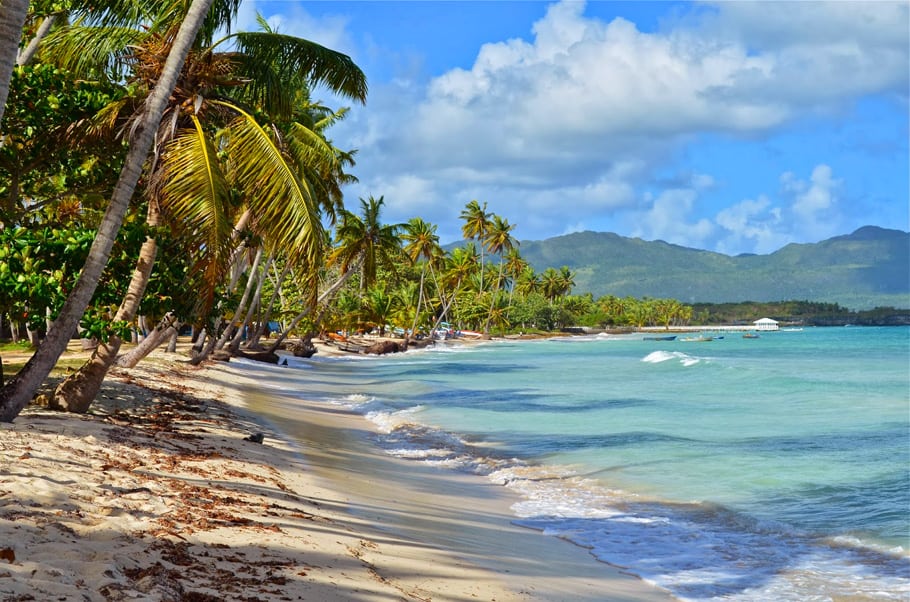
.
Cabarete
This small town, about 30 minutes from Puerto Plata, is the windsurfing and kiteboarding mecca of the Dominican Republic. The beaches are good (though not on par with some of the other beaches of the DR) but they are not the principle attraction; Cabarete is known as the “Adventure Capital of the Caribbean” with many water/land activities in the area. It has some good restaurants, an active nightlife, happening bars, and some affordable hotels. For all the above reasons, it is probably the most popular spot for backpackers in the Dominican Republic.
Recommended accommodation: Tropical Casa Laguna.
.
In the Mountains
There are two towns in the Cordillera Central mountain range (called the Cibao) that hold interest for travelers looking to do hiking and adventure sports in the highest mountain ranges in the Caribbean. Jarabacoa, is well set up for tourism with some good hotels and restaurants as well as plenty of adventure-tour outfits offering everything from whitewater rafting, kayaking and cascading to 3-day treks up bald-headed Pico Duarte (the highest peak in the Caribbean at over 3000 m). Even higher up is the town of Constanza, located in a green, fertile valley. The same hike up Pico Duarte can be done from here (an even more grueling 5 day hike). It also has other hiking trails and waterfalls in the near vicinity. Whichever town you go to, dress warmly; the altitudes are high (they call this the ‘Dominican Alps’) and it can get cold and wet.
.
Puerto Plata
When you see all-inclusive tour packages to “Puerto Plata” the place you will actually be staying at is the resort area of Playa Dorada – 3 km from Puerto Plata, it is a gated tourist complex of about 15 resorts (and a whole other world than the actual town of Puerto Plata). Playa Dorada is where the all-inclusive tourists go and it has the cheapest packages in the Caribbean (competing with Varadero in Cuba). There is a reason for this – the beaches and location are nowhere as nice as some of the DR’s other resort areas. You’ll see a big price spread between “Puerto Plata” and Punta Cana when looking for that all-inclusive package. Be warned.
.
The actual town of Puerto Plata has a few attractions though none (in my opinion) worth spending the night for. I’d stay in Cabarete and make Puerto Plata a day trip. Main attractions: the Fortaleza San Felipe (nice views of the harbour) and the funicular (teleferico) to the top of Mount Isabel for great views of the city and the sea.
note: Canyoning at the Damajagua Falls near Puerto Plata is a popular activity and something that I enjoyed and will never forget. However it can be very dangerous, especially in rainy season. There’s been broken bones and cuts. Lonely Planet even recommends as a top 10 activity for anyone visiting the DR. Do it if you make sure you are a good swimmer and in good physical condition (I do hear though that they insist on you wearing helmets now. None of that when I went). Tour here.
There’s also a fun zip line where you get to meet monkeys. Tour here. Recommended.
Punta Cana
The premier all-inclusive tourist resort area in the Dominican Republic. Some really nice resorts on what are probably the best beaches in the country. But really just a place for sun, sand, and water activities – there is no “real town” in this area and the geography (inland) is the least impressive in the whole country. Punta Cana has become very popular in recent years. But just remember that all life centers on the resorts here, it is not the real DR. And remember to go to the airport early for the flight out – Punta Cana airport has a hard time handling all the traffic coming through here now!
.
Some Fun Tours in Punta Cana
Costs
Lodging: Most tourists stay in 5 star resorts. The backpacker can find great deals though – a no-frills (but comfortable and clean) room can cost anywhere from $25-$35. I’ve stayed in Dominican hotels in Cabarete, Las Terrenas, Bayahibe, Puerto Plata, and Santo Domingo and all were pleasant and inexpensive. A special treat is the Hotel Villa Colonial in Santo Domingo – but again, you can find hotels in the $30 range if you go there and have a look around.
Food: You can eat relatively cheaply in the Dominican Republic by sticking to local restaurants. Rice, beans, chicken and seafood are staples and local beer (El Presidente) and rum (Brugal) are inexpensive. Average meal, for one, in inexpensive/mid-range restaurant $6 – $10, a local beer less than $2.
Transportation: Caribe Tours covers the whole country and has comfortable and inexpensive buses. The Dominican Republic also has a system of “guaguas”, private operators using vans or small buses, that go everywhere. Even cheaper than Caribe Tours but they can be cramped and as a tourist you won’t know where to take it. Ask a local.
Scams and Dangers
Contrary to popular belief, the Dominican Republic is very safe except for some spots in Santo Domingo. The thing most tourists get scammed on however is on the sale of fake cigars on the beach. Women should also watch out for the very charming Dominican men – they’re the stereotypical Latin lovers.
Related: Why I love the Dominican Republic

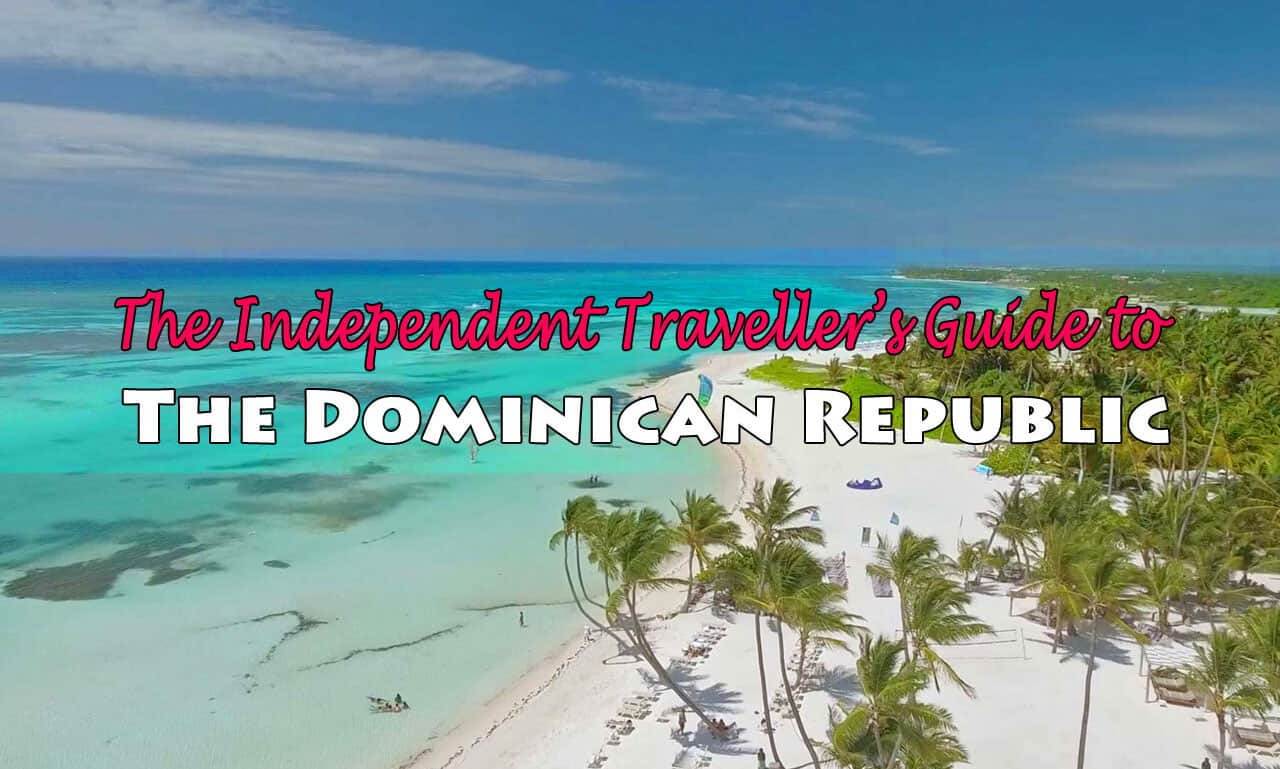
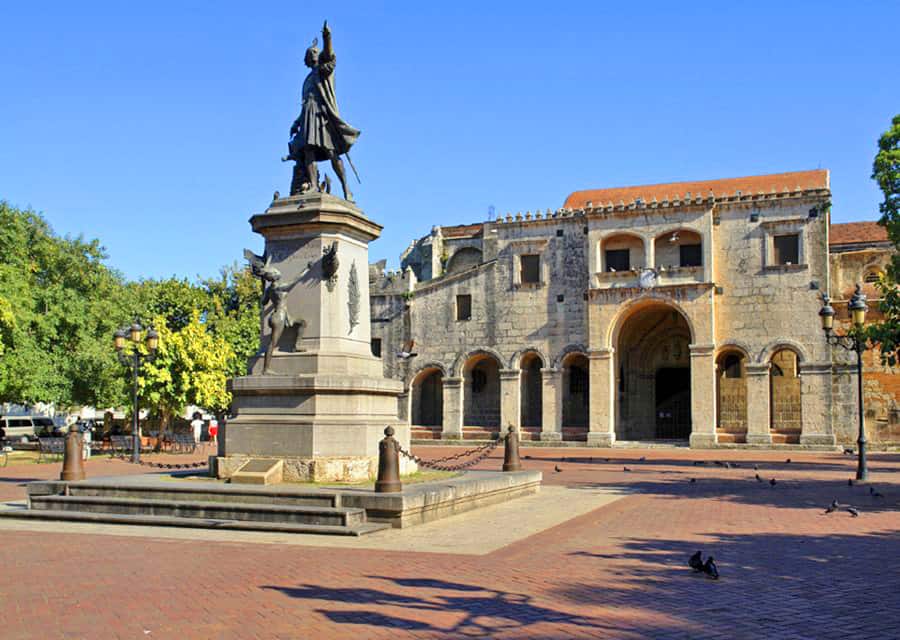
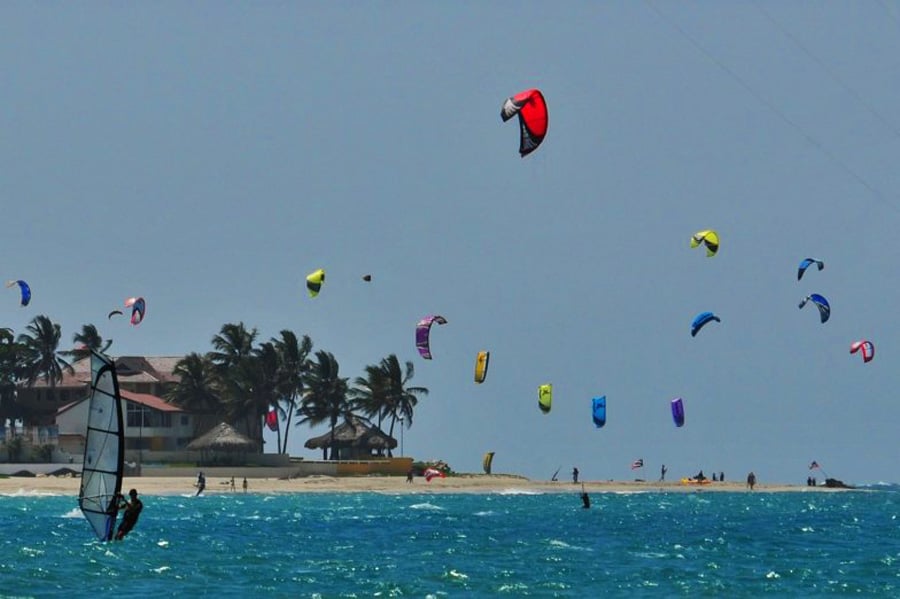
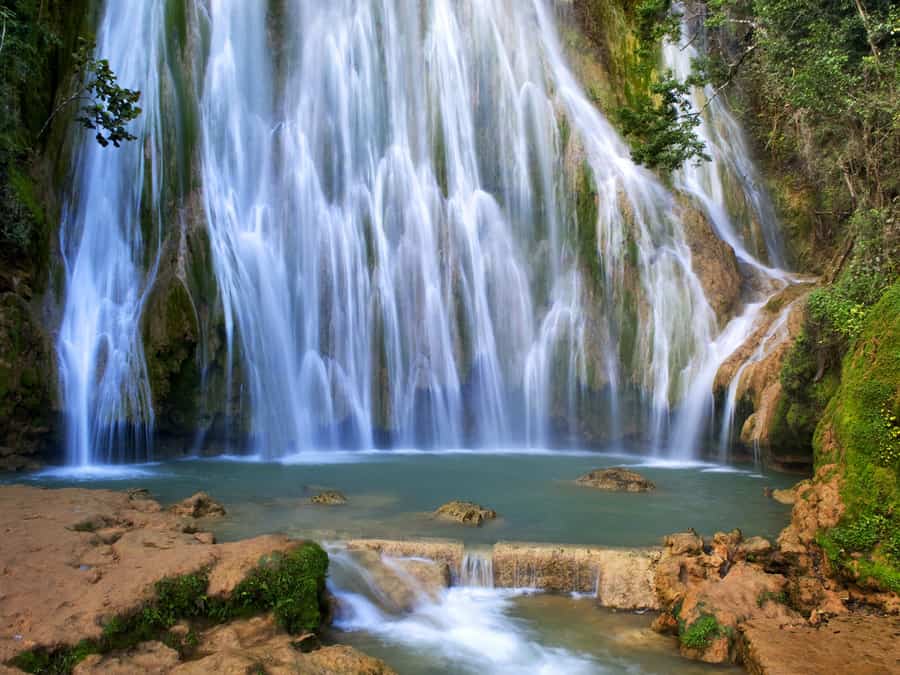
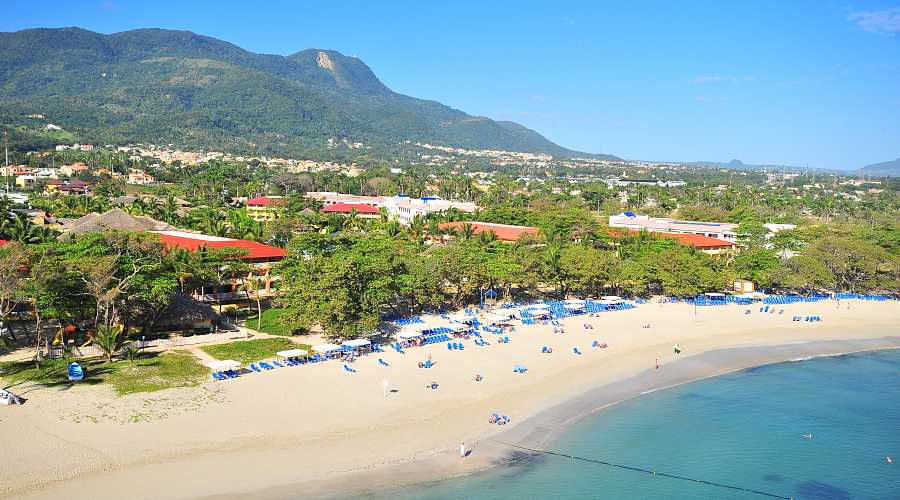
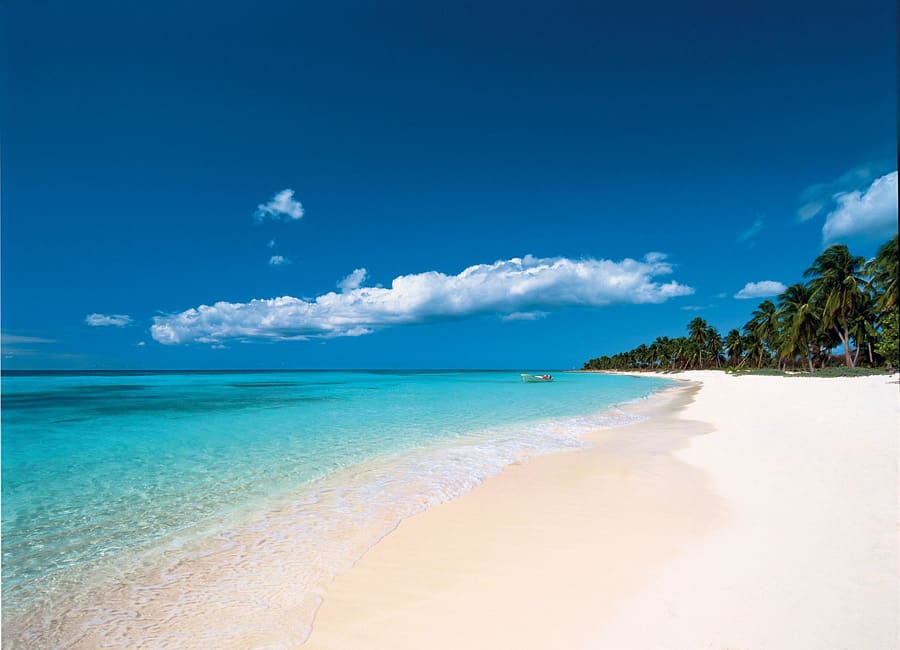

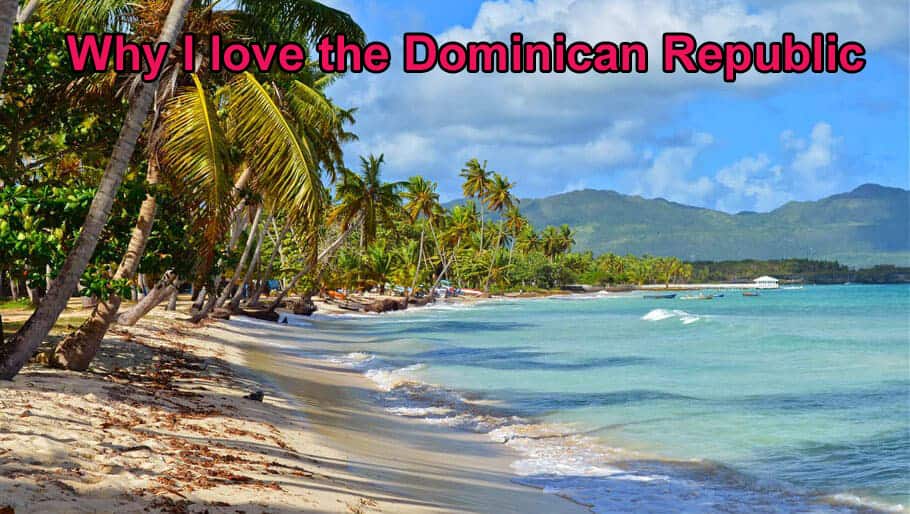
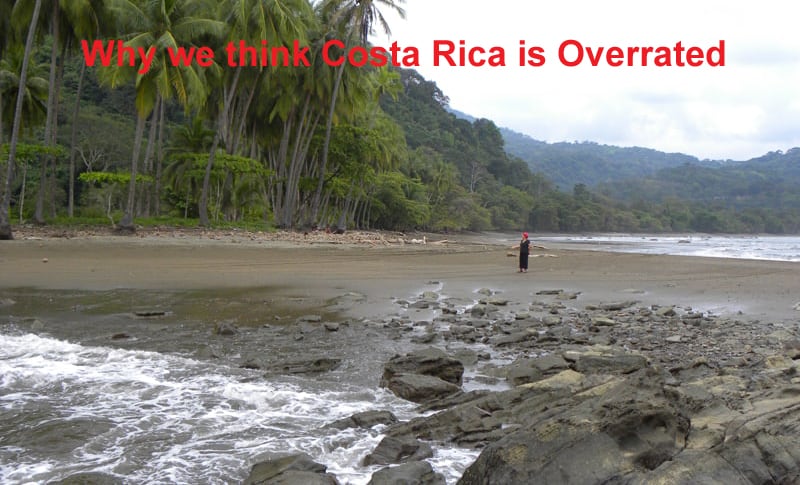
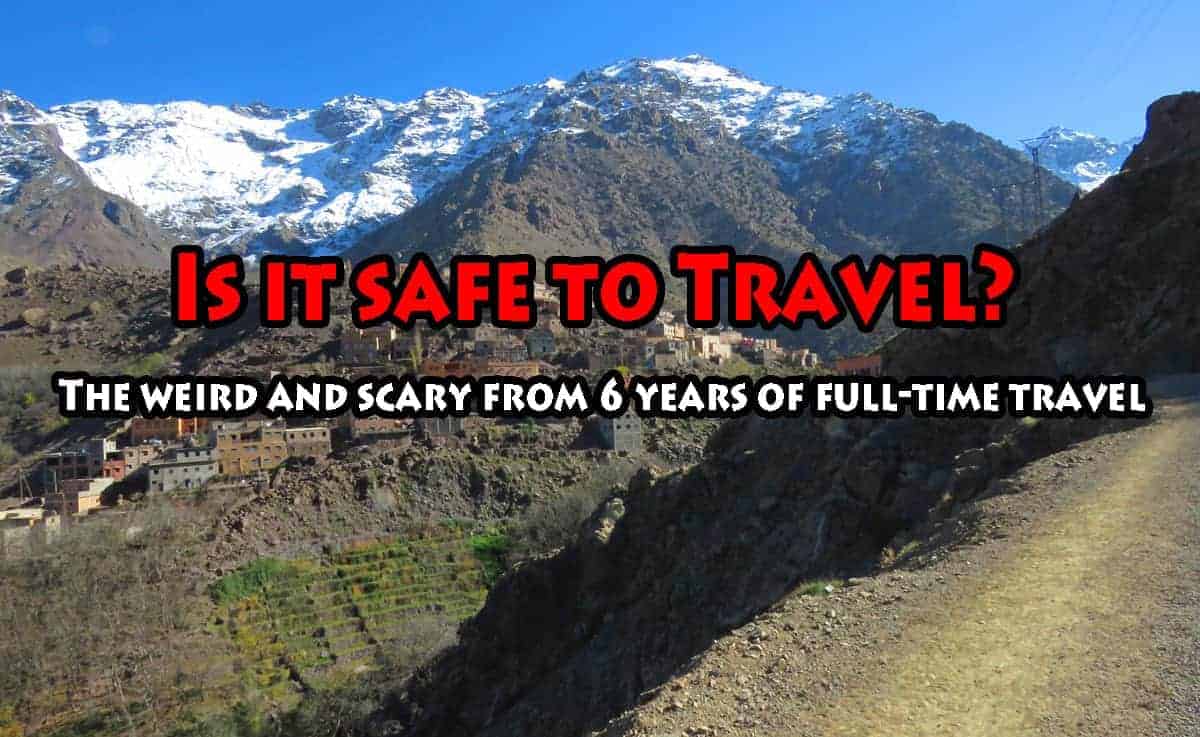
I lived there for three years and we are moving back as soon as we can. Very good information…especially the part about the safety…no more dangerous than anyplace else and in many ways….safer! Everyone should go to the DR!!!
Thanks for the comment Nancy! I know some expats make the DR home, met a few in Las Terrenas. If you ever have information that you think could help readers of this blog please feel free to write again – always like feedback from people who live there.
As an American living in the Dominican Republic and working in the tourism industry I really like your post. I especially like how you talked about Punta Cana being very nice but still not much more to the area then many resorts -it’s not the true Dominican Republic. To add your great post I would also suggest to people before they head out to the one of the many wonderful beaches in the country that they may want to spend a night in the Colonial Zone. With its rich history, beautiful buildings, many museums, cafes, restaurants and it being the first city in the New World; it really is a place that far too many tourist skip. I understand the desire to get to the beach but this Unesco World Heritage Site should be a must see.
Hi, we just got back from the DR and only stayed in Punta Cana because we were told it was too dangerous to rent a car and go exploring. We loved it so much we are going back next year, but really want to explore. WE like off the beaten path, but we also love white sandy beaches. Are we safe to just go on day road trips around the country?
Hi Tanya,
Yes, it’s safe. I’d just be careful in certain areas of Santo Domingo at night (but if you can DO go to Santo Domingo, it’s worth seeing)
The problem with Punta Cana is that there’s not much in the area. I’d suggest flying into Puerto Plata and renting a car there, going to Cabarete, then to the Samana peninsula. Lots of beauty.
What a great article! We’re currently dreaming of going to Dominican republic again – we’ve been
there before and we love, love love it! Here’s to a year with loads of travel plans and new experiences!